On January 1st, I wrote in my notebook that it was “time to renew my usual promises and take artificial, arbitrary steps toward bettering myself and living a different life.” I made a list of aspirations, which included things like “Return writing to its centerpiece in your life,” and “Reduce temptations for distraction.” Fortunately, aspirations always take place in the future tense. I did, however, “read widely and daily,” and came close to learning “constantly.” Despite—or perhaps because of—2017’s relentlessness, I’ve read more books this year than any previous, and I do feel changed, somewhat, because of it.
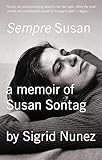
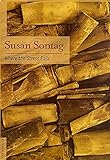
 Seeing—a subject I’ve been circling for years—seemed especially important after the simplistic, stupid, and reproducible narratives that followed the 2016 presidential election, and so I read more Susan Sontag (AIDS and Its Metaphors and Where the Stress Falls, but also: David Schreiber’s Susan Sontag; Sigrid Nunez’s brilliant and comforting Sempre Susan; and Phillip Lopate’s callow, insensitive Notes on Sontag—itself an accidental defense of mediocrity). I read more John Berger (About Looking), and more Teju Cole (the diaphanous Blind Spot as well as every “On Photography” column in The New York Times Magazine). Cole’s work led me to Maurice Merleau-Ponty’s Phenomenology of Perception, which might be the most fun I’ve ever had not understanding a book, and Gaston Bachelard’s The Poetics of Space. I read Peter Buse’s engaging history of the Polaroid, The Camera Does the Rest. (Funny story: Polaroid Corporation specifically discouraged the use of Polaroid as a noun, i.e. “check out this Polaroid.”) I read Patricia Morrisroe’s terrifying biography of Robert Mapplethorpe and Roland Barthes’s Camera Lucida; in both, the photographer is an agent of death.
Seeing—a subject I’ve been circling for years—seemed especially important after the simplistic, stupid, and reproducible narratives that followed the 2016 presidential election, and so I read more Susan Sontag (AIDS and Its Metaphors and Where the Stress Falls, but also: David Schreiber’s Susan Sontag; Sigrid Nunez’s brilliant and comforting Sempre Susan; and Phillip Lopate’s callow, insensitive Notes on Sontag—itself an accidental defense of mediocrity). I read more John Berger (About Looking), and more Teju Cole (the diaphanous Blind Spot as well as every “On Photography” column in The New York Times Magazine). Cole’s work led me to Maurice Merleau-Ponty’s Phenomenology of Perception, which might be the most fun I’ve ever had not understanding a book, and Gaston Bachelard’s The Poetics of Space. I read Peter Buse’s engaging history of the Polaroid, The Camera Does the Rest. (Funny story: Polaroid Corporation specifically discouraged the use of Polaroid as a noun, i.e. “check out this Polaroid.”) I read Patricia Morrisroe’s terrifying biography of Robert Mapplethorpe and Roland Barthes’s Camera Lucida; in both, the photographer is an agent of death.
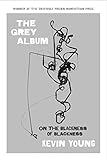
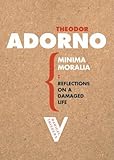
 In my reading and in my essays on the technologies of seeing, I’ve been looking for the places at which perception and politics intersect. The renewed popularity of fascism, which propagates and governs by aesthetics, has made these intersections much more obvious. Of course there’s Hannah Arendt’s Origins of Totalitarianism, which, in contemporary America, has made me feel like Cassandra, whose warnings of Troy’s destruction meet nothing but derision. Even more enthrallingly pessimistic is Theodor Adorno’s Minima Moralia, which I’d tried to read several times in years past, but didn’t quite “connect” with until this year. But then there was Kevin Young’s The Grey Album, a history of American culture as black culture, ever renewed and reinvented and repeatedly appropriated—and one of the best books on art I’ve ever read. There was Ibram X. Kendi’s Stamped from the Beginning: The Definitive History of Racist Ideas in America, which really is definitive. This, more than any other book I’ve read in 2017, is the one book I would hand to everyone, that I wish the entire nation would read. I read Michael Eric Dyson’s Tears We Cannot Stop: A Sermon to White America and Valeria Luiselli’s Tell Me How it Ends, both brilliant missives that beg the reader to understand a particular and overwhelming political pain. And then there was Nato Thompson’s Culture as Weapon and David Graeber’s The Utopia of Rules, which both, in their detailed, patient ways, reveal the sinister sophistication behind structural inequality in the United States, and how fear and confusion destroy democracy in favor of profit. This is evident, too, in Peter Moskowitz’s rage-inducing study of gentrification, How to Kill a City, which led me to Sarah Schulman’s The Gentrification of the Mind—right behind Kendi’s Stamped as “that book everyone should read.”
In my reading and in my essays on the technologies of seeing, I’ve been looking for the places at which perception and politics intersect. The renewed popularity of fascism, which propagates and governs by aesthetics, has made these intersections much more obvious. Of course there’s Hannah Arendt’s Origins of Totalitarianism, which, in contemporary America, has made me feel like Cassandra, whose warnings of Troy’s destruction meet nothing but derision. Even more enthrallingly pessimistic is Theodor Adorno’s Minima Moralia, which I’d tried to read several times in years past, but didn’t quite “connect” with until this year. But then there was Kevin Young’s The Grey Album, a history of American culture as black culture, ever renewed and reinvented and repeatedly appropriated—and one of the best books on art I’ve ever read. There was Ibram X. Kendi’s Stamped from the Beginning: The Definitive History of Racist Ideas in America, which really is definitive. This, more than any other book I’ve read in 2017, is the one book I would hand to everyone, that I wish the entire nation would read. I read Michael Eric Dyson’s Tears We Cannot Stop: A Sermon to White America and Valeria Luiselli’s Tell Me How it Ends, both brilliant missives that beg the reader to understand a particular and overwhelming political pain. And then there was Nato Thompson’s Culture as Weapon and David Graeber’s The Utopia of Rules, which both, in their detailed, patient ways, reveal the sinister sophistication behind structural inequality in the United States, and how fear and confusion destroy democracy in favor of profit. This is evident, too, in Peter Moskowitz’s rage-inducing study of gentrification, How to Kill a City, which led me to Sarah Schulman’s The Gentrification of the Mind—right behind Kendi’s Stamped as “that book everyone should read.”
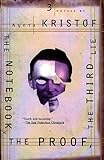
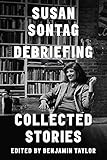
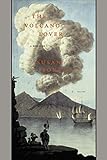 Beauty? I’m not so sure of that, anymore. It’s hard to look for beauty in 2017 without it feeling narcotic, or even violent. But feeling? There is so much to be felt, and I feel like I felt a great deal through reading, this year. Most recently, Alexander Chee’s novel Edinburgh left me shattered and quiet for days. It may have been a mistake to read it in November, when everyone I know seemed to be reliving, after Harvey Weinstein et. al., one form of trauma or another. More Sontag: The Volcano Lover, Debriefing, and In America. Many people dismiss her fiction outright, preferring her to have been one kind of writer and not several, but her latter novels and a handful of her stories are incredible contributions to literature, especially if we’re to remember that literature rarely offers itself in familiar forms. I read Hanya Yanagihara’s first novel, The People in the Trees, which rivals Gabriel García Márquez in its creation and destruction of a separate, unique, and precious world. For the first time, I read Frank O’Hara—so I read everything he wrote. Danez Smith’s Don’t Call Us Dead; Daniel Borzutzky’s The Performance of Becoming Human; 50 years of Louise Glück; Layli Long Soldier‘s Whereas; Alex Dimitrov’s Together and By Ourselves: I fell in love with so many new ways of seeing. I’d forgotten, for a while, how to read novels, but then Shirley Hazzard died and I learned, a few months later, that The Transit of Venus takes your breath away on almost every page, an incomparable masterpiece. I learned that Agota Kristof, in her triptych of novels—The Notebook, The Proof, and The Third Lie—could carry a decade in one sentence. I learned that Irène Némirovsky’s Suite Française was a war novel that made Ernest Hemingway’s look like Twitter activism.
Beauty? I’m not so sure of that, anymore. It’s hard to look for beauty in 2017 without it feeling narcotic, or even violent. But feeling? There is so much to be felt, and I feel like I felt a great deal through reading, this year. Most recently, Alexander Chee’s novel Edinburgh left me shattered and quiet for days. It may have been a mistake to read it in November, when everyone I know seemed to be reliving, after Harvey Weinstein et. al., one form of trauma or another. More Sontag: The Volcano Lover, Debriefing, and In America. Many people dismiss her fiction outright, preferring her to have been one kind of writer and not several, but her latter novels and a handful of her stories are incredible contributions to literature, especially if we’re to remember that literature rarely offers itself in familiar forms. I read Hanya Yanagihara’s first novel, The People in the Trees, which rivals Gabriel García Márquez in its creation and destruction of a separate, unique, and precious world. For the first time, I read Frank O’Hara—so I read everything he wrote. Danez Smith’s Don’t Call Us Dead; Daniel Borzutzky’s The Performance of Becoming Human; 50 years of Louise Glück; Layli Long Soldier‘s Whereas; Alex Dimitrov’s Together and By Ourselves: I fell in love with so many new ways of seeing. I’d forgotten, for a while, how to read novels, but then Shirley Hazzard died and I learned, a few months later, that The Transit of Venus takes your breath away on almost every page, an incomparable masterpiece. I learned that Agota Kristof, in her triptych of novels—The Notebook, The Proof, and The Third Lie—could carry a decade in one sentence. I learned that Irène Némirovsky’s Suite Française was a war novel that made Ernest Hemingway’s look like Twitter activism.
If nothing else, my convalescence after last year’s psychological injuries has only been possible, bearable, through books. This is something writers say all the time, usually with an Instagram photo of #coffee or a cat. This is who I’d like to be, our shared photos often say, and it’s in books that I find it easiest to realize those aspirations. Despite everything, I won’t complain that this year’s difficulties have pushed me toward becoming that other version of myself. I don’t regret that I’ve grown closer to books, to their voices.

 And they do have so much to say. In Compass, Mathias Énard reminded me that you could build an entire life—a gorgeous life—out of longing. And in his monograph of Polaroids, Fire Island Pines, Tom Bianchi assured me that queer utopias can exist, at least as long as we remember that a utopia is a moment in time—either an aspiration, out there in the future, or a snapshot we carry of the past, before things got so hard.
And they do have so much to say. In Compass, Mathias Énard reminded me that you could build an entire life—a gorgeous life—out of longing. And in his monograph of Polaroids, Fire Island Pines, Tom Bianchi assured me that queer utopias can exist, at least as long as we remember that a utopia is a moment in time—either an aspiration, out there in the future, or a snapshot we carry of the past, before things got so hard.
More from A Year in Reading 2017
Don’t miss: A Year in Reading 2016, 2015, 2014, 2013, 2012, 2011, 2010, 2009, 2008, 2007, 2006, 2005









